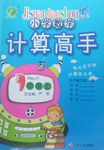题目内容
The article is too long and should be _______ by half.
A. cut down B. cut off C. turned down D. turned off
A

练习册系列答案
 计算高手系列答案
计算高手系列答案
相关题目
题目内容
The article is too long and should be _______ by half.
A. cut down B. cut off C. turned down D. turned off
A

 计算高手系列答案
计算高手系列答案